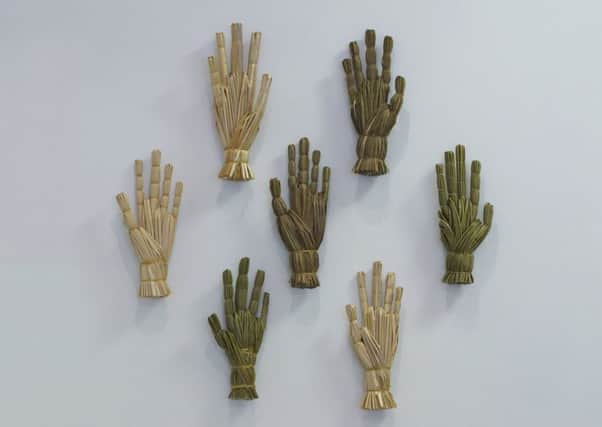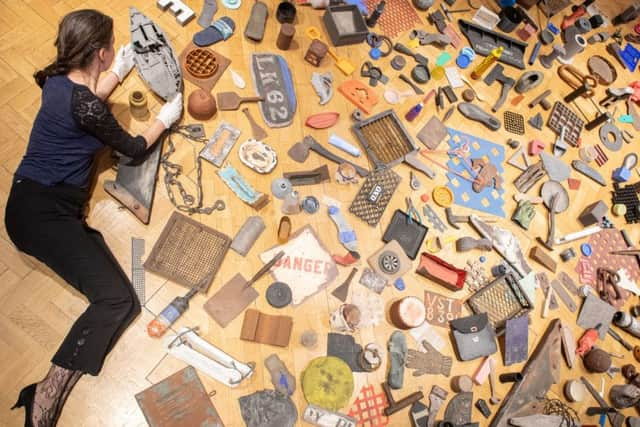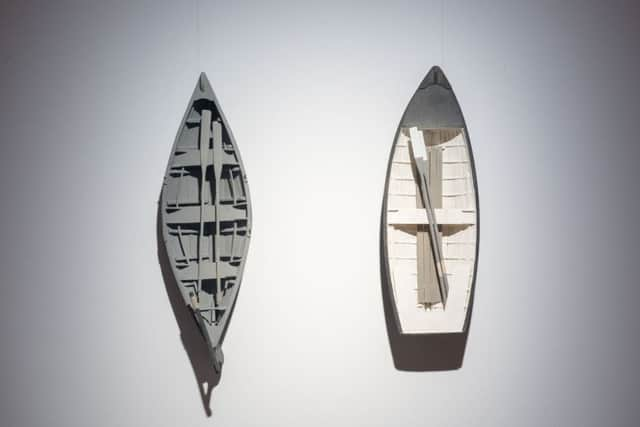Art reviews: Dalziel + Scullion | Robert Callender


Dalziel + Scullion: Homing, Dunbar Town House Museum & Gallery ***
Robert Callender: Plastic Beach, City Art Centre, Edinburgh ****
Advertisement
Hide AdBut to promote contemporary engagement with Muir and his ideas rather than simply passively to commemorate him, North Light Arts, an organisation that describes itself as artist-led, “delivering innovative public arts projects and educational initiatives in and around Dunbar” has established a John Muir residency in the town. This has been held for the last nine months by the artist partnership Dalziel + Scullion (Matthew Dalziel and Louise Scullion) and the fruit of their tenure is displayed in Dunbar’s historic Town House under the title Homing.


There are photographs taken along the nearest section of the John Muir Way, the part that runs from Musselburgh and the gradually re-wilding Cockenzie ash-tips nearby, to Dunbar itself. Altogether the show comprises a rather charmingly heterogeneous display of photographs and finds; the latter are mostly the result of beach-combing, although not exclusively from the Dunbar area. There are shells and shards, sea-urchins, feathers and fossils, all sorts of pretty things exquisitely arranged. Sticks from an eagle, a raven and an osprey’s nest are each neatly labelled. Perfect spheres of fibrous material found on a western sea-loch are typical of the sort of natural curiosities any of us might pick up on the seashore. And that is the slightly laboured point of it all. The artists exhort us to do it too and thus encourage us to engage with nature through our senses; and in case we have forgotten what they are, photographs of faces enumerate for us Taste, Sight and Smell. Bare feet represent Touch, but also more practically the table of assorted finds represents Collecting and another similar arrangement Making. The latter includes corn-dollies with helpful instructions on how to make these age-old talismans that carried the vital spirit of the crop from one harvest to the next. More unexpected is nature herself harvested to help you on the John Muir Way in a pair of birch-bark shoes. Put them on wet so they take the shape of your feet and they will travel 40 miles before you need make another pair.
It is all intended to suggest another, more personal John Muir Way, a way of being in touch with nature for a society that has lost that vital connection. The title, Homing, is intended to suggest that we might rediscover in ourselves something like an animal’s instinctive ability to find its way home, or in our case back to nature, or more simply that we should “home-in” on nature to re-establish our neglected contact. “Art,” the artists say, “can become a conduit between people and nature, assisting how we can experience our shared environment from alternative perspectives, re-establishing our connection with nature and the non-human species we live alongside.” It is all very charming, admirable even, but also patronising in a rather Blue Peter-ish sort of way. We are the children and the artists are the adults talking down to us.
There is nothing patronising about Robert Callender’s work at the City Art Centre in Edinburgh, nor was there about the man. Callender, who died in 2011, was direct and forthright and so is his art, though it achieves its effect through remarkable subtlety and the most painstaking attention to detail.
Callander’s show is called Plastic Beach. Though it was made over several years more than a decade ago, thanks to David Attenborough this is now highly topical, but Callender got there on his own. The title work, Plastic Beach, is apparently just that, an assemblage of 500 pieces of plastic, except that every single one is a stunningly faithful replica, made by the artist essentially out of paper, glue and paint. A film in the exhibition shows him at work. It was an extraordinary undertaking, but evolved out of the artist’s long-standing concern with the sea and especially the shoreline. He began by collecting driftwood and other flotsam and jetsam, most of it made of wood though covered with sea-worn paint and perhaps adorned with rusty metal bolts and fittings. He paid homage to these things in a remarkable series of works. The City Art Centre cannot accommodate some of the largest pieces, which is a shame, but the skeleton of a boat and another ruined boat broken down into three parts give a good idea of what he liked to do. These too are made of recycled paper and cardboard, glue and paint, though to achieve his meticulous representation of sea-worn surfaces he deployed great inventiveness using ash, marble dust and much else in addition to paint. The results can be very beautiful as here in Red Boiler Lid, or Toolbox, for instance. The first is a flat circle of red lead paint on rusty steel punctuated with symmetrical rows of rivets. The second is an open wooden box against a square of weathered blue planks. What these are really is wonderful, three-dimensional paintings and a tribute to the way that, in the sea, Nature reclaims for her own, great and small, the work of people.


But Nature cannot reclaim plastic. As he worked on what he found on the beaches, Callender realised that the driftwood that had once been so plentiful was disappearing and it was being replaced by indestructible, multi-coloured plastic. Plastic Beach was a passionate response to his shocked recognition of a profound and horrifying change in our environment, brought about by our thoughtless adoption of non-natural materials. It is a major work.
Homing until 30 June; Plastic Beach until 8 July